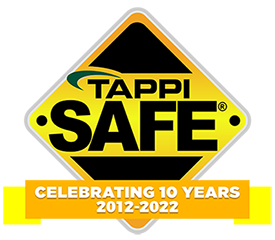 Search
Search
Use the search bar or filters below to find any TAPPI product or publication.
Filters
Content Type
Publications
Level of Knowledge
Committees
Collections
Journal articles

Magazine articles

Dry chip feedrate control using online chip moisture, TAPPI JOURNAL May 2018
Dry chip feedrate control using online chip moisture, TAPPI JOURNAL May 2018
Journal articles

Magazine articles

Laboratory method for determining the source of brightness loss at a southern United States bleached paperboard mill, TAPPI Journal October 2018
Laboratory method for determining the source of brightness loss at a southern United States bleached paperboard mill, TAPPI Journal October 2018
Magazine articles

The use of oxidized white liquor as a caustic replacement in o, eo, eop, and e2 bleaching stages of kraft hardwood and softwood pulp, TAPPI JOURNAL, June 2000, Vol. 83(6)
The use of oxidized white liquor as a caustic replacement in o, eo, eop, and e2 bleaching stages of kraft hardwood and softwood pulp, TAPPI JOURNAL, June 2000, Vol. 83(6)
Magazine articles

A personal mount st. helens experience, TAPPI JOURNAL, May 2000, Vol. 83(5)
A personal mount st. helens experience, TAPPI JOURNAL, May 2000, Vol. 83(5)
Magazine articles

Nanoparticle prospects & perspectives, TAPPI JOURNAL, May 2000, Vol. 83(5)
Nanoparticle prospects & perspectives, TAPPI JOURNAL, May 2000, Vol. 83(5)
Journal articles

Magazine articles

Experiments and visualization of sprays from beer can and turbo liquor nozzles, TAPPI Journal February 2022
ABSTRACT: Industrial scale swirl-type black liquor nozzles were studied using water as the test fluid. Simple water spraying experiments were found to be very beneficial for studying and comparing nozzles for black liquor spraying. These kinds of experiments are important for finding better nozzle designs. Three nozzle designs were investigated to understand the functional differences between these nozzles. The pressure loss of nozzle 1 (“tangential swirl”) and nozzle 3 (“turbo”) were 97% and 38% higher compared to nozzle 2 (“tan-gential swirl”). Spray opening angles were 75°, 60°, and 35° for nozzles 1, 2, and 3, respectively. Video imaging showed that the nozzles produced sprays that were inclined a few degrees from the nozzle centerline. Spray patter-nation showed all the sprays to be asymmetric, while nozzle 2 was the most symmetric. Laser-Doppler measure-ments showed large differences in spray velocities between nozzles. The spray velocity for nozzle 1 increased from 9 m/s to 15 m/s when the flow rate was increased from 1.5 L/s to 2.5 L/s. The resulting velocity increase for nozzle 2 was from 7 m/s to 11 m/s, and for nozzle 3, it was from 8 m/s to 13 m/s. Tangential flow (swirl) directed the spray 6°–12° away from the vertical plane. Liquid sheet breakup mechanisms and lengths were estimated by analyzing high speed video images. The liquid sheet breakup mechanism for nozzle 1 was estimated to be wave formation, and the sheet length was estimated to be about 10 cm. Sheet breakup mechanisms for nozzle 2 were wave formation and sheet perforation, and the sheet length was about 20 cm. Nozzle 3 was not supposed to form a liquid sheet. Nozzle geometry was found to greatly affect spray characteristics.
Journal articles

Magazine articles

Editorial: ”Didn’t know we knew that” • Rediscovering the fundamentals, TAPPI Journal April 2022
ABSTRACT: Access to today’s extensive electronic information archives is certainly an amazing feat of technology. Nonetheless, it can sometimes be difficult to find pulp and paper industry process-specific resources that are easily digestible and tailored to help us in our day-to-day work.
Journal articles

Magazine articles

Ultrastructural Behavior of Cell Wall Polysaxxharides, TAPPI Journal April 2022
ABSTRACT: Considerable information on the ultrastructural organization of the plant cell wall and the supermolecular arragement of the cell wall components, in particular of cellulose, has been obtained with the electron microscope.
Journal articles

Magazine articles

The Mechanism of Bonding, TAPPI Journal September 2022
ABSTRACT: Three factors are involved in cellulose bonding--available area, contact, and hydrogen bonding.
Journal articles

Magazine articles

Displacement washing of softwood pulp cooked to various levels of residual lignin content, TAPPI Journal September 2021
ABSTRACT: This study investigates the influence of the degree of delignification of kraft spruce pulp cooked at seven different kappa numbers, ranging from 18.1 to 50.1, on the efficiency of displacement washing under laboratory conditions. Although the pulp bed is a polydispersive and heterogeneous system, the correlation dependence of the wash yield and bed efficiency on the Péclet number and the kappa number of the pulp showed that washing efficiency increased not only with an increasing Péclet number, but also with an increasing kappa number. The linear dependence between the mean residence time of the solute lignin in the bed and the space time, which reflects the residence time of the wash liquid in the pulp bed, was found for all levels of the kappa number. Washing also reduced the kappa number and the residual lignin content in the pulp fibers.






